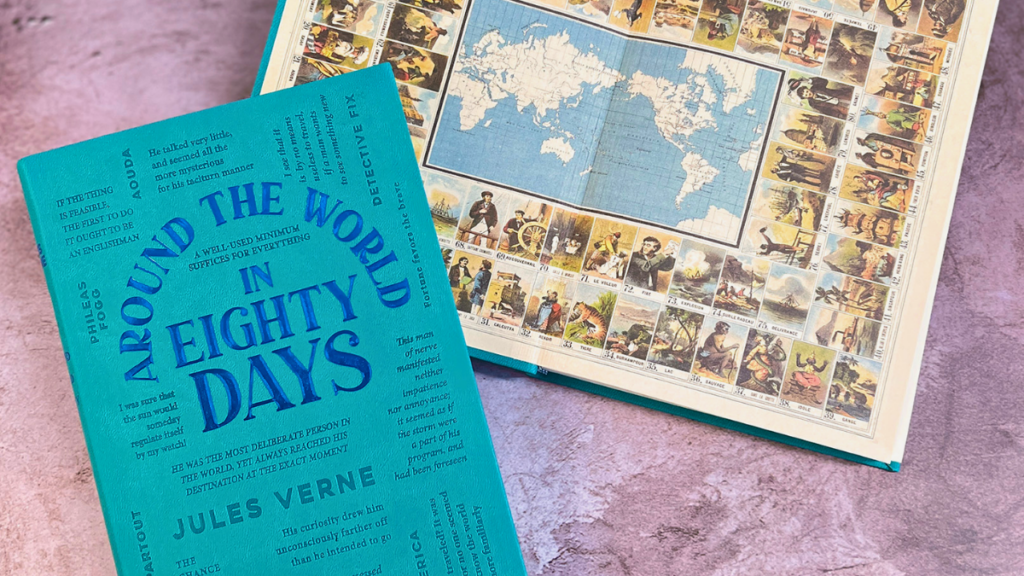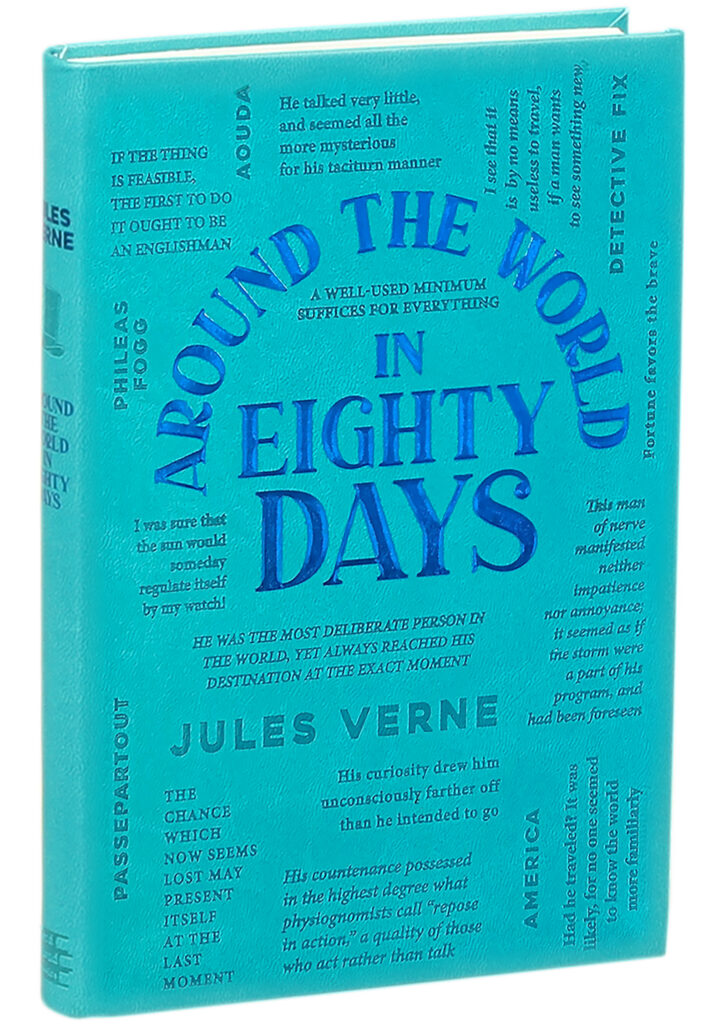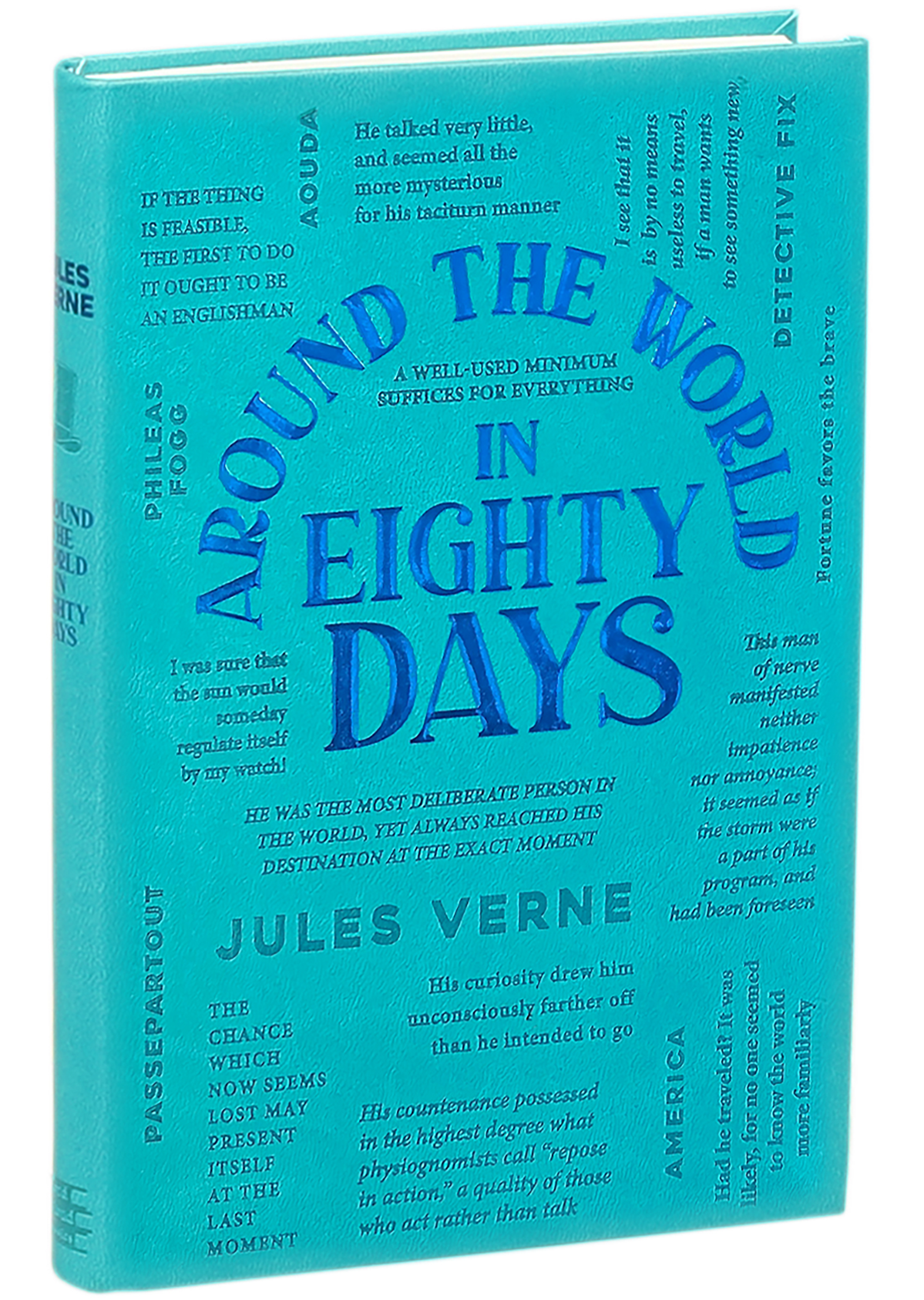By Brian Boone
Exactly 150 years ago, one of the most enduring and influential adventure novels saw its first publication: Around the World in Eighty Days by fabulist fiction master Jules Verne (Twenty Thousand Leagues Under the Sea). Here’s a look at the inspiration and impact of Phileas Fogg, who wagers his fortune over the claim that he can circumnavigate the globe in less than three months’ time.
Hey, Verne!
Around the World in Eighty Days feels like a novel and original idea from the 19th century, but it was actually part of a broader literary fad. Verne’s popularity and way with words made his take on the idea of rapid global travel in a set period of time the one book from this era that wasn’t virtually and quickly forgotten. In the 1870s, many books, primarily nonfiction, entertained readers in the U.S. and England, including Round the World: Letters from Japan, China, India, and Egypt; Around the World by Steam, via Pacific Railway; Around the World in A Hundred and Twenty Days; and Letter from the Sea and from Foreign Lands, Descriptive of a Tour Round the World. That last one was based on letters written by tour organizer Thomas Cook; Verne cited an ad for Cook’s travel agency as the direct inspiration for his novel.
A Product Placement Pioneer
Companies paying a substantial fee to get their products featured in a movie or TV show is commonplace today. The first recorded instance of “product placement” came in the first edition of Around the World in Eighty Days. Jules Verne was so established as a popular author that his book about globetrotter Phileas Fogg was sure to sell a lot of copies, so shipping firm Peninsular and Oriental Steam Navigation Company persuaded the author to work in references to one of their vessels, the Carnatic.
Oopsy-Eighty
There’s a big mistake in the book. Because an official International Date Line did not exist when the book was published (it was established in 1884), Fogg didn’t realize that he’d added an additional day to his itinerary. He makes his way to San Francisco on a bustling day, but according to the math, that would have been a sleepy Sunday in the Bay.
Buy this book!
Eight Days Too Many
In a bit of stunt journalism in 1889, American investigative reporter Nellie Bly tried to re-create Phileas Fogg’s voyage and wrote about it in a series for the New York World. Bly completed the trip in 72 days — which included a stop to meet a congratulatory Jules Verne.
A Bunch of Hot Air
Probably the most popular adaptation (of many) of Around the World in Eighty Days is the 1956 film version, which won the Academy Award for Best Picture. Phileas Fogg makes significant use of a hot air balloon on his journeys, and that method of conveyance became the indelible image associated with Around the World in Eighty Days. In the original novel, a balloon is briefly mentioned as a possible means of travel and then never spoken of again. The concept was created entirely for the film.
A brand-new anniversary edition of Around the World in Eighty Days from Canterbury Classics just arrived. Hop in your balloon and grab one today!










